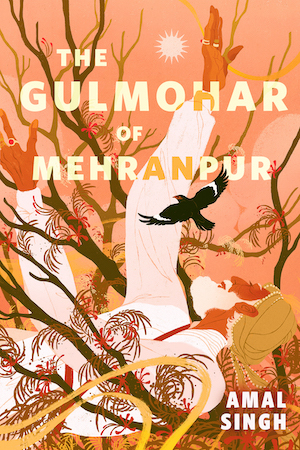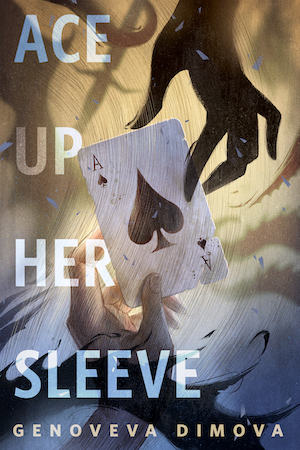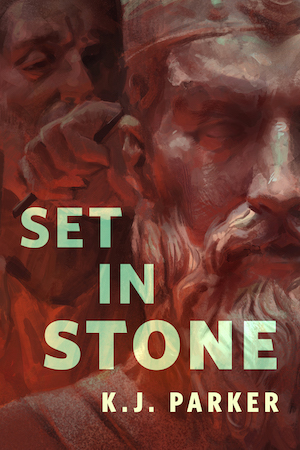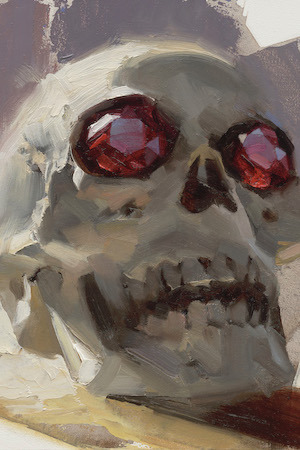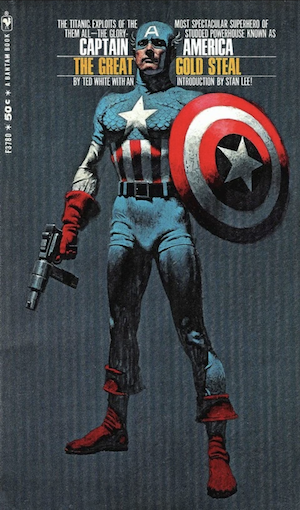In this bi-weekly series reviewing classic science fiction and fantasy books, Alan Brown looks at the front lines and frontiers of the field; books about soldiers and spacers, scientists and engineers, explorers and adventurers. Stories full of what Shakespeare used to refer to as “alarums and excursions”: battles, chases, clashes, and the stuff of excitement.
Today, as part of my summertime search for pulpy adventure books to read, I’m looking at two novelizations featuring my favorite comic book character, Captain America. Novelizations, or adaptations of stories from other media, are not always seen as the pinnacle of literature—and when novels are based on superhero comic books, they tend to get even less respect. But these stories can often be enjoyable, especially in the hands of authors who are knowledgeable about and comfortable with comic book superheroes.
I found these two books in a recent archaeological expedition in my basement. The first is from 1968, and the second is from 1998, and the approaches to the novelizations reflect the publishing industry in two different eras. The first is a slim novel; in length, format, and style very similar to the Doc Savage novelizations so popular for Bantam Books in that era. It was part of what appears to be a series of only two novels, which also included The Avengers Battle the Earth-Wrecker by Otto Binder, which suggests that this particular publishing venture was not a success.
The second novel is part of a much more extensive series from the 1990s which included more than forty books. They were published by Berkley Boulevard Science Fiction imprint, and packaged by Bryron Preiss, which specialized in illustrated books (and later in early forms of electronic books). As it turns out, this series was edited by Keith R.A. DeCandido, who is well known to readers of Reactor as a long-time reviewer of superhero and science fiction movies and television shows.
The cover of the older book is by the incomparable Robert McGinnis, whose work on detective and romance novels was ubiquitous in the 1960s, and who was perhaps most widely known for his book covers and movie posters for the James Bond series. His depiction of Cap captures the character well, depicting him as lean and athletic, and not overly muscle-bound like some comic book depictions. The second book has a cover by famed comic book artist Jim Steranko, although unfortunately it is printed in metallic colors, and superimposes Cap on a featureless silver background, which somewhat diminishes Steranko’s distinctive work. Oddly, the cover has no copy on the front, with the title and author only listed on the spine. Each chapter is illustrated by a pen and ink illustration by comic book artists Mike Zeck and Bob McLeod, which is a nice way to leverage the visual appeal of a comic book in a prose novel.
This is not the first time I’ve reviewed a comic book novelization in this column, having covered Nick Fury, Agent of S.H.I.E.L.D.: Empyre here. And when Stan Lee died, I looked at a favorite comic book featuring the WWII adventures of Nick Fury and Captain America here.
About the Authors
Ted White (born 1938) is an American science fiction author, editor, fan, and critic. His earliest contributions to the field were in fanzines, and he won a Hugo Award in 1968 as best fan writer. He’s written over a dozen science fiction novels, and participated in a number of collaborations. He was an assistant editor of the Magazine of Fantasy and Science Fiction for five years in the 1960s, and then edited Amazing Stories and Fantastic magazines. He later worked at Heavy Metal and Stargate magazines.
Tony Isabella (born 1951) is an American comic book fan, writer, editor, artist, and critic. He worked as an editorial assistant for Marvel, and scripted a number of their books. He then wrote for DC comics, and later for Comico and Innovation Comics. He had a long-time column in Comic Buyer’s Guide.
Bob Ingersoll (born 1952) is an American lawyer and comic book writer. His full-time occupation before he retired was as a county public defender in Cleveland, Ohio. He’s written a number of comic books, which included superhero, science fiction and other stories. He also wrote a column in Comic Buyer’s Guide that discussed the portrayal of the legal profession in fiction.
Captain America
Captain America was created by Joe Simon and Jack Kirby in 1940 for Timely Comics (which later became Marvel). The cover of the first issue had the flag-clad superhero punching Hitler in the face. At this point, the US had still not entered the war, and American Nazi sympathizers picketed the Timely building. I once met the elderly Joe Simon at a New York Comic Con, and in addition to talking about creating Captain America, he took great delight in describing how the pugnacious Jack Kirby had headed straight downstairs to fight the picketers, only to return disappointed because they had already left.
Like many characters in comic books, Captain America’s origin has been retold many times, although the basics remain the same. Young Steve Rogers was 4F due to poor health, but volunteered to serve as the subject of an experiment to create a super-soldier. The successful experiment granted him superhuman strength, reflexes, and stamina, but the scientist who created the process was murdered by a Nazi spy, and the secret of Cap’s creation died with him. In the days before the US entered the war, Cap served as an enlisted man on the home front, taking on the bumbling persona of Private Steve Rogers by day, and donning his colorful uniform to fight saboteurs at night. Because in those days, comic creators thought teen sidekicks helped sales, the unit mascot, James “Bucky” Barnes, discovered his secret and extorted him into accepting him on as a partner.
The comic company attempted to keep the Captain America comic going after the war, but sales tailed off, and the book was cancelled. Then, in the mid-1960s, having created a new super-team called the Avengers, Stan Lee decided that team would discover Captain America, lost at sea after attempting to stop a missile at the end of WWII, and frozen in suspended animation ever since. He was revived and became a member of the Avengers. He fought not only the usual villains of the time, but also unrepentant Nazis trying to revive the Reich. And he mourned his old partner Bucky, who had died in their attempt to stop that missile.
Over the decades, while they tried to keep comic book continuity and history intact, Marvel eventually had to abandon Cap’s fixed mid-1960s revival date, revising it to a more nebulous “several years ago.” And his adventures began to reflect the complexities of modern politics, as his desire to represent American ideals often brought him into conflict with the government. Cap spent a long time partnered with the Falcon, a Black man from Harlem with mechanical wings and a telepathic connection to birds, including his pet hawk Redwing. At times, the Falcon even assumed the mantle of Captain America himself.
Over the years, some people have dismissed Captain America because the idea of a person wrapped in a flag turned them off, seeing him as a symbol of blind patriotism and runaway nationalism. The truth, however, is that he (a product of New Deal optimism) leans a bit left of center, and often finds himself at odds with those whose patriotism takes a darker or fanatical turn. Another impression people have is that virtuous characters are boring, and less interesting than complex villains or antiheroes. Yet, in the right hands, a good person’s struggle to live up to high ideals can be just as interesting as the pursuit of vengeance or evil.
Captain America: The Great Gold Steal
The resemblance of The Great Gold Steal to Doc Savage novels is no coincidence, as one of Ted White’s other novels was a Doc Savage pastiche featuring a character called Doc Phoenix. The book opens with Cap trying to read some novels, and not being happy with any of them (the in-joke there is that one, a science fiction novel, fits the description of a book by White). And when a character delivers a piece of a gold bar to Captain America, and gets murdered by a laser beam while doing so, that character is given the name of Monk Mayfair, which is the name of one of Doc Savage’s assistants. Mayfair has apparently run afoul of a shadowy organization, led by a shadowy figure, whose members have adopted the names of birds as code names.
White spends the first few chapters re‘cap’ping the history of Captain America (see what I did there?), and does a great job evoking New York City in the 1960s. The villain’s use of lasers is also an artifact of the 1960s, as the devices were all the rage back then. The plot hinges on the fact that in those days, US currency was tied to the value of gold bullion stored at Fort Knox and Federal Reserve Banks around the country. Cap, going it alone because the other Avengers are off in space (they very frequently disappear to give Cap a chance for solo adventures), recognizes the seal on the gold Mayfair had given him, and meets with the Vice Director of the New York Federal Reserve Bank to discuss the issue. The villains have tunneled from an abandoned warehouse into the bank vault and steal a few truckloads of gold, only to be confronted by Captain America, who they attempt to blow up. His remarkable healing powers allow him to recover from being buried by the explosion. The villains, wanting to make one more try at the gold, use their laser to destroy a power plant and distribution node, plunging the city into darkness and chaos. Cap immediately realizes what is going on and confronts them in a grand battle.
The book is a fun one, although very much a product of its time. Unfortunately, it doesn’t give Cap enough chances to demonstrate his fighting prowess, and in one case he is rather easily captured by his foes. He also grabs a handgun to wound an adversary at one point, perhaps because White wanted to give him a grittier edge, but it would have been more in character for him to use some other means to neutralize the opponent. The mysterious mastermind is finally revealed, although because the author didn’t introduce enough characters to properly misdirect the reader, the reveal is rather anti-climactic. Overall, the book is a fun experiment in rendering the character’s comic book adventures into the format of a novel.
Captain America: Liberty’s Torch
The book opens with the obligatory re‘cap’ (I did it again) of the character’s history, this time using the new “several years ago” timeline in describing his thawing from suspended animation. Cap now works with the Falcon as a partner. The authors introduce a new character, a mystery writer named Colin Maxwell, whose work is set in the 1930s, and which Cap enjoys. When Cap goes to get a book signed, they strike up a friendship, and over the next few years Cap helps Colin with getting details of the era right. But Colin is now working on a novel set in modern times and decides to research the threat of militia groups, which leads to his murder by an especially nasty group called Liberty’s Torch. With real-world incidents like the bombing of the Oklahoma City Federal Building fresh in everyone’s minds, this was a very timely topic in the late ’90s.
Cap and Falcon find that the Liberty’s Torch group is not only anti-immigration, anti-welfare, bigoted, and homophobic, but they are also conducting a wave of crimes against symbols of the “socialism” they see as destroying America. Moreover, they are planning to soon engage in open revolt. Wealthy industrialist Taylor Douglas, leader of Liberty’s Torch, decides to capture Captain America and put him on trial for the various “wrongs” the United States has comitted. Because Captain America often proves surprisingly easy to capture when the plot requires it, he is soon imprisoned in the extensive bunkers beneath Douglas’ large upstate New York estate.
The group sets up a “citizen’s court,” presided over by Douglas, and with a jury made up of loyal militia members. They release daily tapes of the proceedings to a sympathetic news network to get publicity. To give the appearance of fairness, they kidnap a lawyer, Mark Gruenwald, to represent Cap (as a tribute, the authors gave the character the name of a beloved comic book author who had recently died). But while Douglas thinks he has the upper hand in these proceedings, even the trappings of an American courtroom have a power that undermines his attempted rush to judgement.
While Cap is imprisoned, Falcon pairs up with a militia expert, and the two of them head out to explore the Liberty’s Torch compound. The expert turns out to be a politically conservative, law-abiding member of another militia, Phillip Barry, who the authors employ to keep the politics of the novel from falling into an overly simplistic left-versus-right dichotomy. The fantatical Douglas has decided, once the trial of Captain America is over, to stage his own death, and trigger his revolution by attacking a United Nations training exercise that is being held in the woods nearby. Soon the area erupts into chaos as all the plot threads collide in a thrilling climax.
The book is well researched, and the fact that one of the authors is a lawyer makes the proceedings of the kangaroo court feel real. The prose is sometimes a bit stiff, and the authors have a tendency to show off the extent of their research in long expository lumps or detailed descriptions of weapons and devices. But the plot moves along at a brisk pace with plenty of action, so any flaws in the narrative don’t draw too much attention. All in all, the book is a fun read for Captain America fans, as well as a good introduction for readers who might be less familiar with the character.
Final Thoughts
These two books show the evolution of superheroes during the latter half of the 20th century, with the characters and the situations they faced becoming more complex over time. But through it all, the character of Steve Rogers remains as brave and steadfast as ever. Captain America was a favorite when I was a teenager, and remains my favorite comic book character today. And now I’d like to hear from you: What are your feelings on Captain America, and if he’s not your favorite comic character, I’d like to hear who your favorite is, and why…


